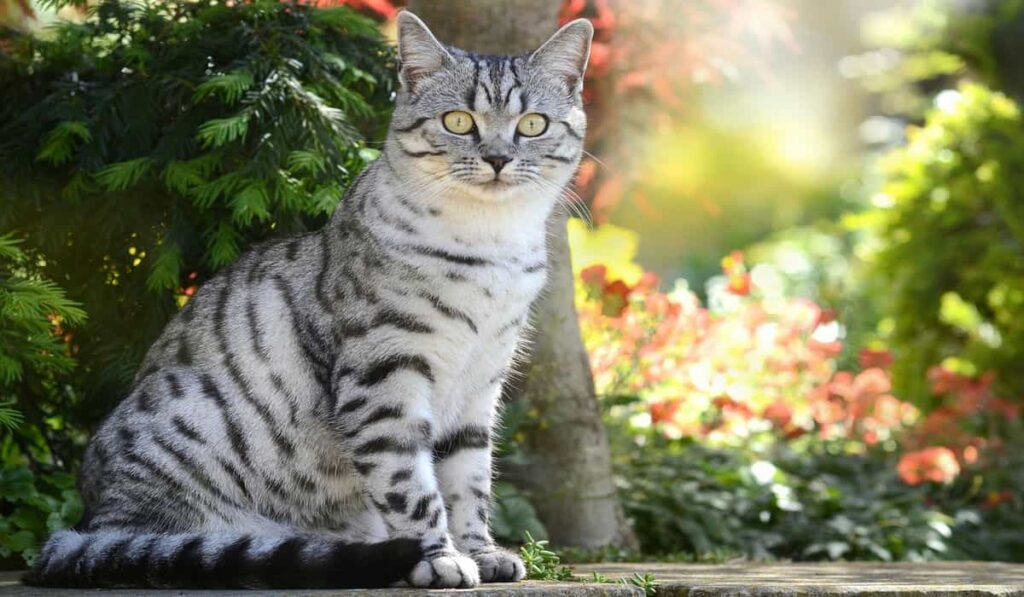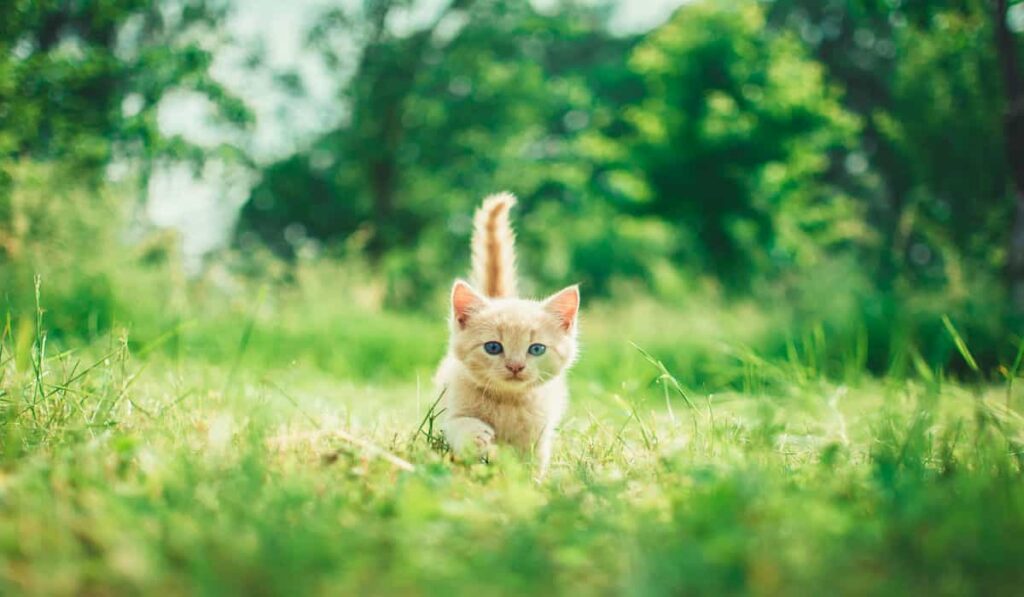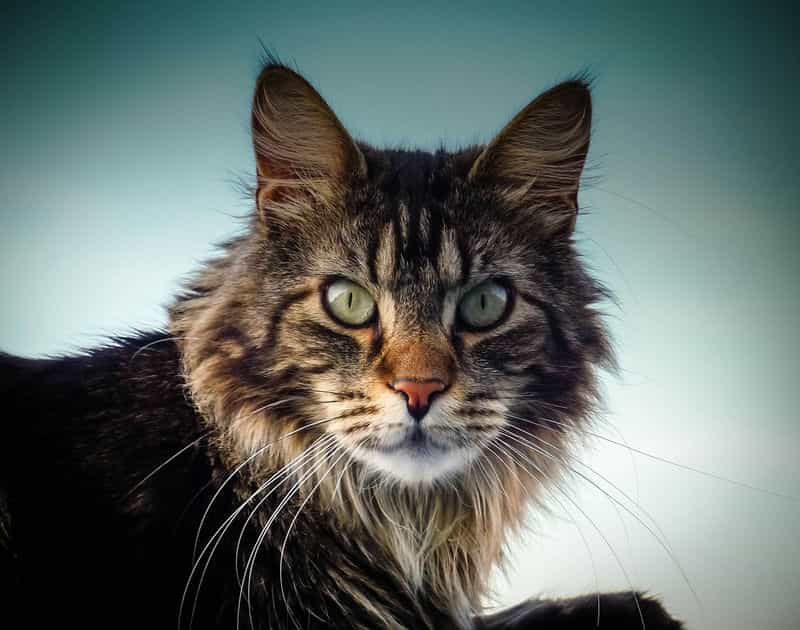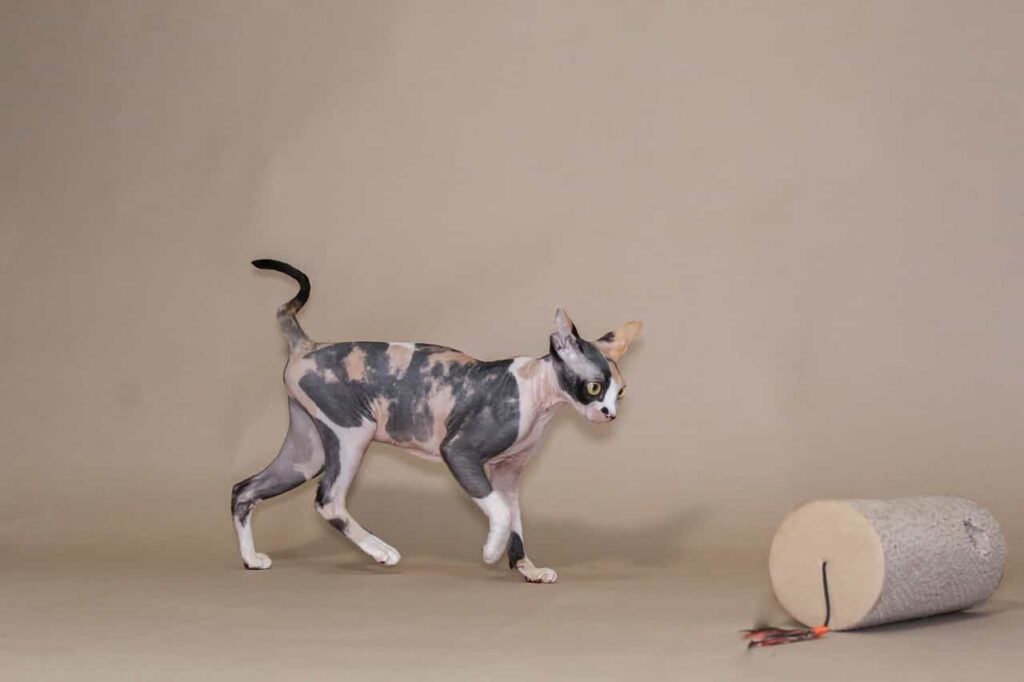Welcome to the world of barn cats, the unsung heroes of the countryside. These feline custodians play a crucial role in maintaining the balance of rural ecosystems. This comprehensive guide delves into “barn cat care and management,” highlighting how these resilient cats thrive in their outdoor environment. From understanding “barn cat behavior” to implementing effective “feeding strategies for outdoor cats,” we cover every aspect of barn cat life.
Whether you’re considering “adopting a barn cat” or looking to enhance the wellbeing of your farm’s feline friends, our guide offers valuable insights. Discover the “benefits of having barn cats,” learn about “healthcare for barn cats,” and explore suitable “shelter options for barn cats.” Join us on this informative journey to appreciate and care for these essential members of the rural community.
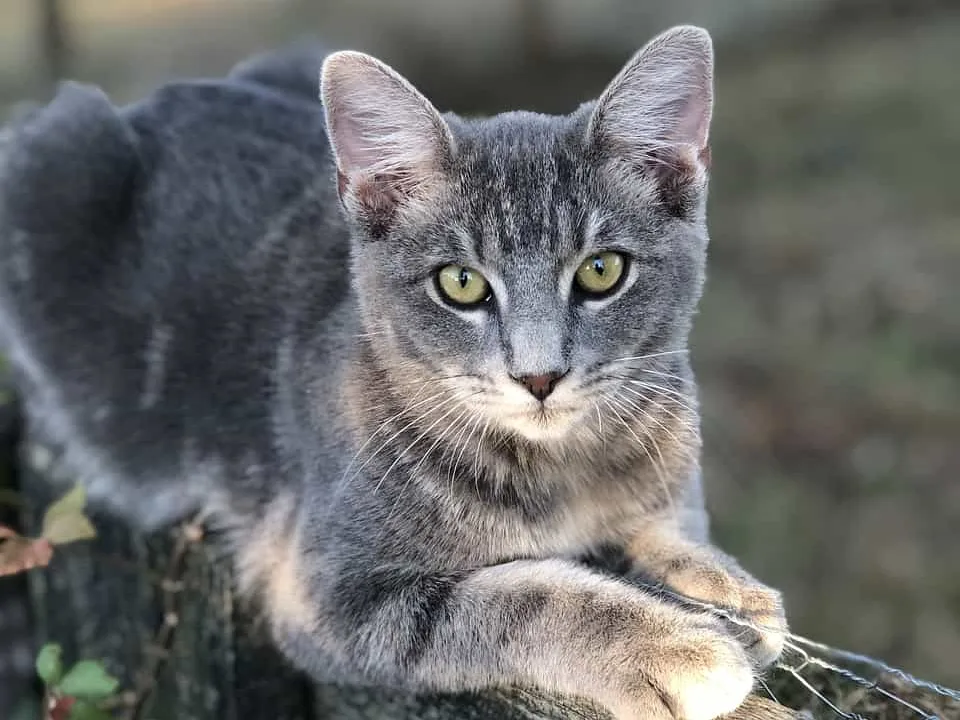

Table of contents
The origin of the Barn cat
There is no particular history of Barn cats. As there are so many breeds included in Barn cats so any particular history isn’t recorded. The barn cats were domesticated in 7500 BCE and were motivated by the needs of mankind to save the grains from rats, rodents, and other grain-eaters.
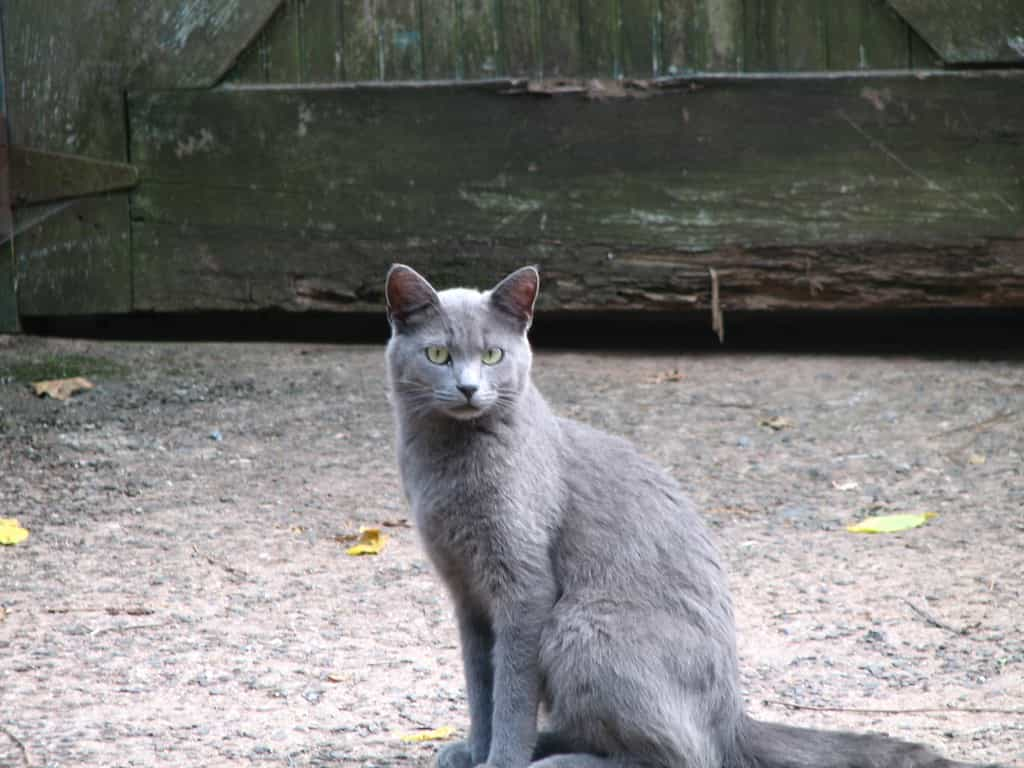

The ancestors of the Barn cats probably came with the Roman conquerors and the first settlers in Europe and crossed with the native domestic cats and feral cats. After that, they were imported to the USA in the 16th and 17th centuries. Their descendants are modern Barn cats.
what are the Types of Barn cat?
Barn cats have some types. They live in different conditions. So, the living conditions of Barn cats determined their types. Such as-
- Some Barn cats live in feral conditions. They have minimal contact with humans. Their owners don’t provide with them any food or treatment. Their food is rodents and mice. They catch and kill the grain eaters and eat them. Feral Barn cats live in those farms and outhouses. These kinds of cats get thinner and live a short life due to the lack of high- a quality feline diet, veterinarian support, internal parasites, and a lot of physical hard work.
- Another type is part-time cats. They live both indoor and outdoor life. They roam around outside and also are allowed inside the main house to be fed. The owners provide them with high-quality cat food and regular vet treatment.
- The third type lives in semi-feral conditions. They live outdoors and in outbuildings but the owners provide with them veterinary care and treatment. They are friendly with humans.
Some full-time outdoor Barn cats are given food by the landowners because they don’t want hungry, sick, and sick animals on their property and motivate them to lower the population of rodents, rats, and mice.
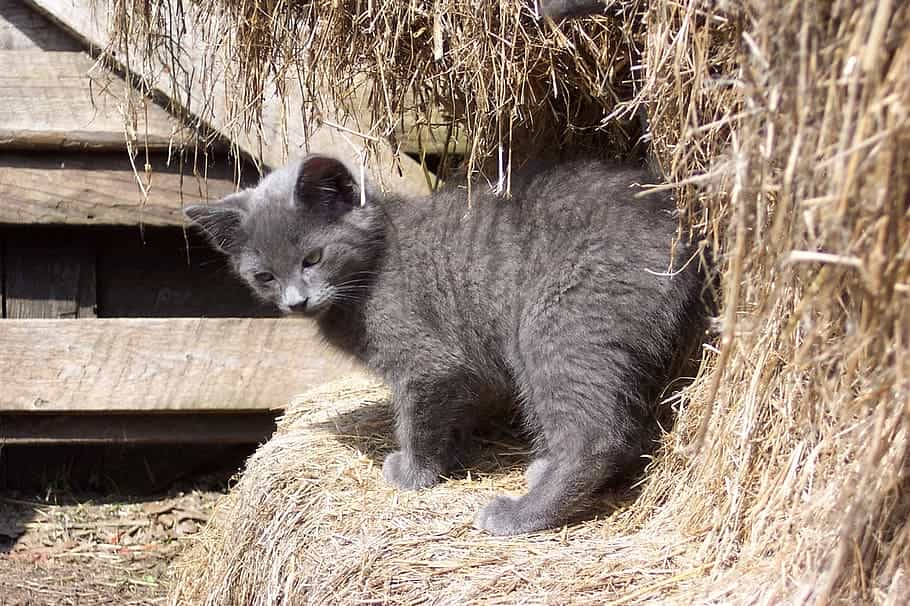

Some farm owners don’t provide food to the Barn cats because they believe that if they provide them with the food then the Farm cats won’t hunt rats and other small animals as they are not hungry and the population of rats will be increased.
One thing that is common among the 3 types of cats is mentioned above. The common thing is all are at risk of being preyed on, getting attacked by parasites and diseases, may be injured by various means, and can be stuck in vehicles. The farm owners are provided with poisonous food for the rats and other small animals. The Barns kill those and eat and die due to eating poisonous animals.
Getting preyed on is another risk for Barn cats. They can be attacked by Raccoons, Owls, Coyotes, and other animals that prey on cats. If the Barn cats are provided with food by the owner then it can be the cause of inviting the Racoons, Skunks, and other vermin to the farmhouse.
Barn cat program
The feral cats need a safe relocation that is carefully planned and executed. There is no guarantee that your Barn cats will be good pest controllers. But most Barn cats are good predators. They need good living conditions to be a good pest controller. I am telling you the steps to having Barn cats.
You can keep 4 Barn cats together for each farm for its safety and security. Some farm owners think that there is no need of keeping 4 Barn cats. Only 2 cats are enough. But I assure you that the Farm cats are almost invisible. If you feed them just the food amount will be increased, nothing will be increased. The team of 4 Barn cats will provide a better service in their pest-controlling job.
The Barn cats live feral or Semi-feral lives which are not always ideal for them. They are unadoptable so, they don’t have any other options. One thing is very important and this is careful matchmaking so that every cat gets at least a good relocation.
How to choose the right Barn cat?
You have to fill up the Barn Cat Adopter Questionnaire first from where you are going to adopt these cats. The Barn cats collection is from various sources. The sources are- trapped by the Local Animal Control Jurisdictions, abandoned by their owners, and left in the shelters and the shelters are considered unadoptable. The reason can be the lack of socialization.
When there are so many cats in the shelters then it is difficult for the shelter authority to give a pet owner to all cats. In this situation, the shelter authority provides some cats to the farm owners. Some pet cats have a poor litter box issue. So, they are surrendered by their owners several times. So, these are very much suitable for farming.
Always check that your Barn cat must be capable to live at least a part-time outdoor life to do the pest-controlling job. That’s why I am giving stressed about keeping 4 cats together. If there is a team of cats then all cats will become the same and if any cat is less willing to be outdoors, it will learn from other cats. must keep a semi-feral or tame cat on the team. They are very good mentors for feral cats.
Barn cat needs and requirements
Be kind and conscious about the food, water, and shelter for the Barn cats. Without the basic requirements fulfilled your Barn cats can’t stay longer for long periods if there is another better Barn shelter for them.
Generally, the shelters don’t provide the Barn cats to those Farmhouses that can’t provide food, water, and at least a roof and protection from the weather.Dogs are a big problem for Barn cats. They chase and annoy those cats. So, I advise you to make a plan to stop dogs to chase the Barn cats.
The condition of your farmhouse must be eligible for the Barn cats that are coming to your Fam house so that acclimation can be easy for them. If the farm or outbuilding is safe and secure then you can release the Barn cats immediately after you have brought them.
If your farmhouse doesn’t have a secure roof or place where the Barn cats can take rest and shelter during the rain, storm, and in winter seasons then you must arrange a 4’x4’ relocation cage. The cage should be capable to save the Barn cats when they need shelter. A straw pandal should be on the cage and straws should be placed around and on the floor of the cage. An old blanket should be in the cage so that they can cover themself when they feel cold. This kind of arrangement makes the cats comfortable and helps them to get used to the new environment.
The relocation equipment is easy to buy. If you want to purchase one then I would recommend you purchase the 36’’x 48’’x 48’’ midwest pet exercise pen with a wire top. This pen is easy to fold, carry, set up, and also clean up. You can search the websites of midwestpetproducts.com and kits to build your own cat cage on the website of cdpets.com.
Food, water, litterbox, and preparing the farmhouse for Barn cat
Now let’s talk about their food, water, and litter boxes. Barn cats eat the same food that is provided to the house cats. Food quality isn’t a problem. The problem is in the serving place. You know very well that the farms are situated in the open areas where other animals like Racoons, dogs, Squirrels, and Skunks are available.
So, if you serve food in an open place to your cats then other animals can access there which is not safe for your Barn cats. So, I advise you to serve food either in the enclosure or in a high place where the Racoons and other animals can’t the food. You can use cat food storage as the IRIS elevated with all-tight food storage will be the best for your Barn cats.
You also can use an automatic cat feeder like the Petmate pearl pet cafe feeder to interact with those cats who don’t want to deal with humans. So, thus you can feed your Barn cat safely and reduce the chances of accessing other animals.
Safe and clear water is essential for all animals. So, provide clear and fresh water to your pets in a water dish but remember that the water dish should be kept aloof from the resting place of your cat. A heated water bowl is a must during the Winter season so that the water can’t get frozen. For the Barn cats-it is more essential than the pet cats. K&H products thermal-bowl for pets will be a good choice.
The litter box is another essential for your Barn cats. You can provide a conventional litter box, Rubbermaid containers, plastic-lined cardboard boxes, or Boot size shoe boxes. If you use shoe boxes then you will need several boxes because they are disposable.
I suggest you the newspaper or palettes for cat litter. Don’t use clumps as these are very messy to get into the food and water bowls. Now you have to your farmhouse to keep the Barn cats. As the cats are in a new and stranger place so, you prepare the farmhouse at least 2 Weeks before so that you can get enough time to renovate the cage or enclosure. Tack the enclosure or cage so that the Barn cats stay secure while sleeping or resting. You also can do it during the acclimation period so the cats can see that you care for them and they will provide good service in return.
The crucial acclimation period for Barn Cat
When feral cats are got trapped by the Local Animal Control Jurisdiction they got spayed or neutered by surgery, then get recovered in a cage, and get handover to the farm owners for a new location or farmhouse. The whole process is so stressful for the poor cats as they are used to a free and lavish lifestyle.
In this situation, if you release those cats in such a harsh situation like a farmhouse then it is very natural that they can get frightened, and very much possible that they run away from the farmhouse. Even if you provide them with a good cat enclosure or room to rest and good food, they can run away.
So, it is essential to give them some time to adapt to the new place and situation. This time period is called acclimation. The acclimation period consists of 14 days. The period is so crucial. In these 14 days the cats get time to calm down and realize that they’ll be safe and secure when they will be released. They become familiar with the sights, sounds, and smells of the new location.
A volunteer from the shelter will bring the cats to your farmhouse or outbuildings and will help to set up them. The volunteer will tell you when, how, and where to release the cats. So, please be prepared with the preparation that is mentioned in step Four and cooperate with the volunteer.
The ideal place for these cats’ permanent home is inside the barn or other outbuildings. The acclimation place should be enclosed and the windows must have grills because the cat will watch the outside views from the windows and crack the walls. The acclimation place should have an attachment to the outer world so that the Barn cats can get a glimpse of the outer world.
If you don’t have a secure and safe place for the cat’s acclimation place come a permanent home, then you can arrange a cat cage or enclosure which have mentioned in step three. The cage is the best place for the cats to get a glimpse of the outer world where they’re going to spend the rest of their lives.
You should check the cat room of your outbuilding or farm from time to time as the cats are experts to find a whole to get out when the straight way of getting out is closed. Cats are fond of being gathered on the roofs or upper parts of their home as they can get enough sunlight and feel more secure than the floor.
You can arrange a hayloft and cat longing area. The area can be made with a sheet of plywood over a set of rafters. You also can make a cave in the loft made of hay or straw. The cat can sleep in the cave when they need a warmer area to cuddle. You also can use cat carriers, cardboard boxes, and rubber-made containers in the loaf or rafters.
If the cats are brought in a relocation cage to the barn, then please set it up near the cat’s permanent home or resting place. If it’s not possible then set in your convenient place. The relo cages are very secure, safe, and ideal for hiding. Most of the time the cats hide in the relo cage when people are around them.
You can place a blanket or sheet over the relo cage to make the Farm cats more comfortable. The relo cage door must be opened except the night time so that the cats can’t be locked inside the cage. The door must be held open with a bungee cord, twine, or a rock that is placed in front of the door making obstacles to be locked. Otherwise, when you’ll open the door, it will become dashing and run from the farmhouse.
Now the token for taking care of them. You have to provide food and keep the litter box clean daily for your Barn cats. You can provide dry food. And, you also can give canned food daily to your Barn cats as a treat. Talk to them and keep a radio in front of them so that they can feel welcomed to their new home during the acclimation period.
And what about the litter box cleaning?
Clean the litterbox daily so that hygiene keep maintained. If your Barn cats are living in a relo cage then it is an advantage for you. It is very easy to swap out a clean litter box with a dirty one and clean the dirty one for the next day.
It’s time to release the Barn cat
In the first 24 hours of acclimation, the Barn cats may become noisy and try to get out of the relo cage or room. Let them do that. As they’re very scared and frightened so behaving like this is very natural. Let them calm down and wait for the release. Don’t make a hurry to release them otherwise they’ll understand that you have stuck them and they’ll run away and never return. So, the acclimation period will continue for 14 days if any emergency not occurs.
Similarly, the acclimation periods shouldn’t be more than 14 days. Because if you confine them for a longer period of time then when you’ll release them they will run away too. In this situation, the Barn cat will understand that you’ll confine them again, so they’ll never return.
The 14 days of acclimation are over. Now you can release your Barn cats. If your cats were in a room then simply open the doors and walk away. Don’t stand in front of the doors as the cats will get scared to see you.
Go away from the room leaving the door open. The cats will come out but enter the rooms again getting scared. Let them do this. Don’t force them to roam around. They’ll definitely do this on their own time.
If you live in enough secure farmhouses then keep the doors closed for some days more because there is still a chance of your running away from your cats. After that, there is no need to keep them closed and they will adjust fully to the farmhouse.
If a relo cage was been used for the acclimation period, then open the door in the same way. If you have a loft for the cats and want to release them on the loft, then set the cage on the loft and then open the cage door.
Remove the cage or carrier from the palace when the cats stop getting entry to the cage. But keep the food, water dish, and litter box in the same place until your cats are used to staying in a permanent home. If you purchased the relo cage then keep it in the store room after cleaning it. If you took it from the shelter, then return it as soon as possible.
Caring after the release for Barn Cat
Feeding:
When you’ll start feeding your Barn cats in a new location don’t remove the food from the old location (room or relo cage). Keep 2 bowls until your cats eat in the new location and forget the old one. You have to keep several things in your mind such as
- Feed your cats during the day time:
The early morning to the noontime. Try to complete the feeding before noon time in the Summer season when the nocturnal wildlife is sleeping.
- Provide the right amount of food:
Don’t provide an excessive amount of food. Put food according to the needs of your cats. Food shouldn’t be left in the bowl so that other animals like Racoons, Dogs, Squirrels, and other critters. Stay around the cats during the feeding session and remove the food bowl after the feeding is over at least before Sunset. Dogs come in the daytime too. So removing immediately is the best.
- Use an automatic feeder:
It is not mandatory that you’ll be present in the farmhouse for 365 days. You may go away for an emergency, for any work, or for a trip or tour. So, a substitute feeder will replace you. The automatic feeders get empty overnight and waterers get dumped. So, use them so that your pets don’t have to stay hungry and thirsty.
Using the litter box:
When you bring Barn cats to your farm you need a litter box as they’re used to it. But when they’ve adapted to the farm life then you can wean them using the litterbox. But there is an exception here. If there is bad weather and the cats are staying on the farm then you must keep a litter box there. So, I hope that if you follow these 7 steps then keeping Barn cats or Farm cats will be an easy task for you. So, go ahead.
Follow-up
Follow-up is essential after any work is done. So, when Barn cats are sent to their destination, it is the duty of the shelters to take follow up for the well-being of the adopters and cats as well as if any wealth of the suppliers is left and to be returned.
So, the shelters can follow the timeline for follow-up:
- Contact the adopters after ⅔ days from the adoption and ask them how is everything going on. If there is any problem then the adopter will contact you in theri own interest but it is your duty to contact them.
- Contact them after the 14-day acclimation period is over and ask again about the cats. If a relo cage was served from the shelter then ask the adopter to return it.
- When the adopter will return the relo cages or crates then wash them out first. If any used thing is left under the crate, then don’t use those for other cats. Diseases or infections can be spread by using used things.
- After 3 months and 1 year, email the adopter and ask them how are the cats doing.
what are The breeds of Barn cat?
Barn cats are not a specific or separate cat breed. There are so many cat breeds with hunting skills included in the Barn cat category. I am telling you which cat breeds will be included in the Barn cat category. The Barn cats provide us with a very easy and stress-free way to lower the population of rats, rodents, mice, hamsters, etc. let’s start:
American Shorthair
The breed originated in the USA. The American Shorthair is a medium-sized, lovable, very popular house cat. These American Shorthairs are very beautiful. The origin doesn’t have a very interesting history. As we know that the British founded their Colonies all over the world. So, they came to the USA with their cats in 1609. Obviously, they came by ship and cats worked on the ship the rodent controllers. So, American Shorthairs are their descendants and very much eligible for farms and barns.
American Curl
Their Nickname is Peter Pan cat- a very interesting and popular cat breed. Their uniqueness is not only in their name but also in their unusual ears. The ears are curled from the back side and hooded from the front side. American Curl results from a spontaneous genetic mutation; it’s not crossbred. A very much suitable cat breed for hunting.
American Wirehair
This breed was named ‘Wirehair’ because of its unusual coats. The coats resemble the sheep’s coats. But is it an advantage for them? The coats keep them dry and clean in harsh weather. The breed originated in the USA. They are very good predators.
British Shorthair
The British Shorthair cats are one of the most ancient species of cats so far. The United Kingdom’s Governing Council of the CAT Fancy (GCCF) has registered this cat as the most popular pedigree. It is as popular in the native countries of the UK.
The British Shorthair is not a British cat by origin. It has a traveling history. When the Romans came to England in the first century, they brought cats to save their tents and food from snakes and rats. The Romans left England when they couldn’t conquer England, but the cats were spread all over the country and bred. The British Shorthairs have very good skills in hunting.
Bengal cat
The Bengal cat is a unique breed of cat. It has a very different look- such as highly contrasted and rich color coats just like marbles. It is a cross-breed of domestic cats and Asian Leopard cats. But nowadays, the Bengal cats are only the cross of the Bengal to Bengal. The Bengal cats look like baby leopards. As their ancestors were wild cats so it is very natural that they are very good Barn cats.
Chartreux cat
The demeanor look may make you confused about that are they really good hunters or do they be farm cats. But the french muscular-bodied cats are expert and serious hunters.
Chausie cats
The large Chausie cats can be up to 25 pounds. They are originated in Egypt. Though they are very gentle, affectionate, and friendly with their owners and families they are very good predators.
Manx or Crimric cat
Manx is not crossbred; it’s a naturally mutated cat breed. Its most significant trait is- it’s a tailless cat breed. If a Manx cat doesn’t have a tail-it is called `Rumpy,` and with a slight tail- the cats are called `Rumpy risers,` and with a half-tail, Manx is called` Longy.’ It is a pure British breed and appeared first in the mid-1700 century on the Isle of Man- a small island between Ireland and Great Britain. Though the breed is not so active and playful once they get a mouse or rat then you can see their hunting expertise.
Domestic Shorthair cat
Domestic Shorthair is not any specific breed. British Shorthair, American Shorthair, and other standardized breeds with shot coats are recognized by various cat associations as Domestic Shorthair cats. They’re also known as `Moggies`, and `mutts` in the United Kingdom; veterinarians and animal control agencies call them Domestic Shorthair (DHS), House cats, Shorthair (HCS), and Shorthair Household pets. As all the good hunter cats are included in the Domestic Shorthair category so they are very much eligible for farms and Barns.
Feral cat
Feral means wild or forest cats. This is not a breed but rather one type of forest cat. The Local Animal Control Jurisdiction trap them, then spay or neuter them by surgery and provide to the farms or barns. As they are feral so they have the ability to survive outdoors and pest control.
Some feral cats roam around from one area to another and find a place for resting and sleeping. So, they are the perfect Barn or Farm cats. You don’t need to adopt them. Just let them stay on your farm and if your want then you can give some food to them. You can get a worker cat without any hassle.
Japanese Bobtail cat
The Japanese Bobtail is a breed of domestic cat. It is a natural breed with unusual Bobtails. The Bobtails resemble busy bunny tails, not any other cats. Many people have a confusion between the JBT, ABT (American), and Manx cat breeds but I assure you that the 3 breeds are totally different cat breeds.
Though the breed originated in Japan and became a part of their culture, art, and folks for centuries, this cat breed is found all over the world now. The agile and active Japanese Bobs are excellent Barn cats. They’ll do their job with 100% focus and attention. They’ll lower the vermin population of your farm.
Maine Coon cat
Maine Coons can be the best Barn cats. As they have a large size of 20 pounds and have long coats to fight against the extreme cold, so, they can adjust very easily the farm life and they also have hunting skills. The breed originated in the USA. They have muscular bodies so they can hunt rodents, mice, hamsters, and even birds and lower the harmful population.
Pixie Bob cat
The Pixie Bob cats are inherited from Barn cats. That means, their ancestors were Barn cats. So, they are very good hunters and peat controllers- no doubt. The Pixie Bobs are an excellent mixture of affection and hunting tendencies.
Siberian cat
The century-old landrace has semi-long to long coats to save itself from the extreme cold of Siberia. Medium to large-sized Siberian cats are adorable to the Russian and Siberian people for centuries.
As the breed is used to adapting to extreme cold so they can also adjust to the farm conditions. They are extremely agile and they have an excellent tendency and expertise in hunting. They’ll take care of your vermin concern and lower the harmful population from your farm.
Turkish Angora cat
Turkish Angora is a very ancient and natural breed. It is a breed of domestic cat. The breed originated in central Anatolia, at present Ankara-the capital of Turkiye. Though Turkish Angoras are known for their silky, soft, smooth, snow-white coats and Blue or Green eyes with Balerina- like bodies they have no problems with hunting and pest controlling.
The intelligent breed is very expert to catch rodents, mice, and other small animals. So, you can recruit them as pest controllers on your farm. Well, all cats have hunting skills in them. If humans don’t feed them then they will obviously hunt something to calm down their hunger. So, if a cat can adapt to farm life then it can be a Barn cat.
How to find Barn cat adopters?
There are so many farmhouses and barns in the countryside and rural areas in every country. Where there is a farm, there are vermins. So, the farmers and the farm owners badly need to lower the harmful creatures that are residing in their farms and farms without their permission.
What can they do? They apply all the weapons against those harmful animals. But are they successful to chase away the rodents and mice? So, they need some Barn cats that can lower the harmful creature from their farm.
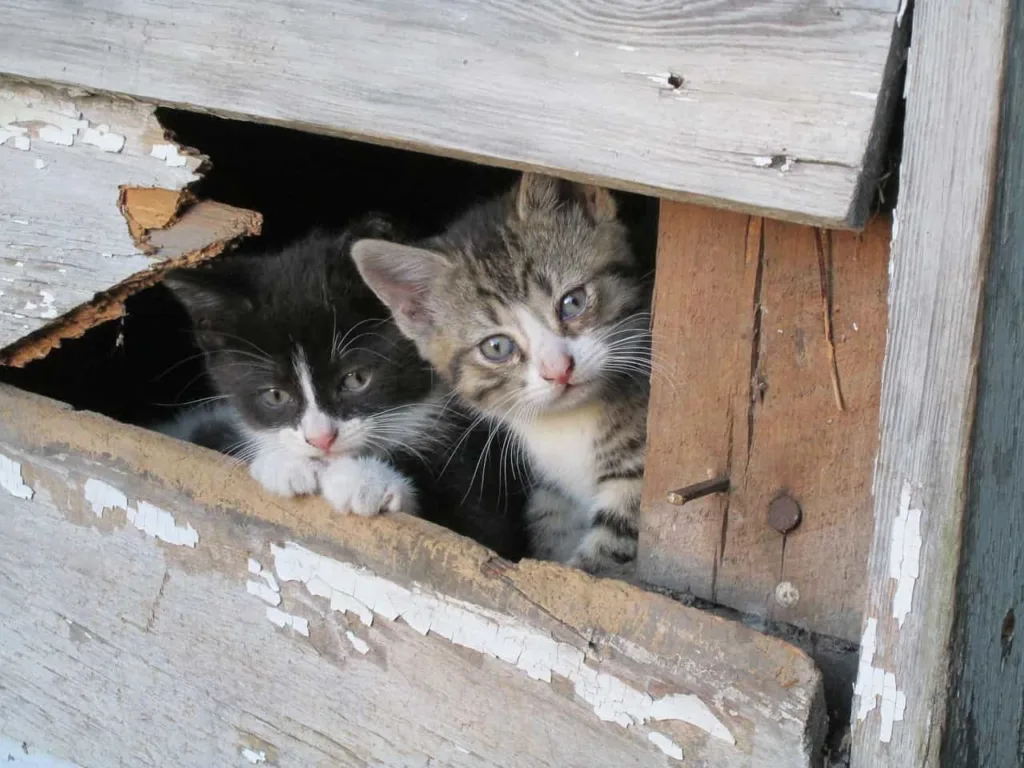

The farms are so big and the vermin population is also big. So, any human can’t do the job of pest control. So, there is a large number of Barn cat adopters all over the country. Barn cats are needed in other places except for barns and farms. The shelter is advised to find is places mentioned below:
- Grain handling facilities
- Storage facilities
- Warehouses,
- Junkyards,
- Auto repair shops,
- Woodworking shops,
- Wineries,
- Stables,
- Greenhouses/ Nurseries/ Garden centers,
- And even Churches.
Some unfortunate domestic cats also need shelters when they are abandoned by their owners due to any unavoidable situation. If the shelters have a large gathering of cats then it is tough to rehome them as domestic cats.
In that cats are sent to the above-mentioned places for pest control. The Barn cats will decrease the Vermin population so organically. Of course, you will use other means such as poisoning the pests or trapping them but keeping Barn cats is the best way I have ever seen.
How to find Barn cat providers?
There are so many businesses that have rodent control issues. So, how can they be a Barn provider? I am giving some website addresses where you can find the providers. Those are-
https://www.thunderingpaws.org, https://loveyourferalfelines.com, https://southcountycats.org,
Some valuable advice for the whole process of having Barn cat
It is very difficult to shelter the feral cats
The feral cats come from the forest area. So, they are neither socialized nor vaccinated. So, they are often sick and spread their sickness to other cats. The shelter owners do their best to solve these problems. But in the process of solving the problems the authority faces so many problems.
Feral cats are aggressive and messy:
Feral cats are used to living in harsh conditions. So, it is very natural that they are aggressive and messy. They will mess up their beds and make dirty the elements they use. You have to spend extra time rearranging all thing.
The shelters can’t define which cat will stay and which won’t:
It is a very crucial thing. As there are so many types and breeds of cats included in Barn cats and the cats are stuck for 14 days for the acclimation so, it is very difficult to say after release which cat will stay and which won’t. It is totally an uncertain thing. Maybe a calm cat will run away and an active, intelligent, and curious cat will stay on the farm.
Good matchmaking is required:
Though all are Barn cats that we provide to the adapters there are some differences among the Barn cats depending on the need of the adopters. Some adopters need super feral cats just for pest control. They won’t take any responsibility to take care of those cats. This type of adopter is from animal farms where they can’t use poisons for the vermins. So, they need Barn cats to control the population of unwanted animals on their farms. So, the shelters provide super feral cats that came from forest areas or other harsh situations.
The other adopters are willing to feed and provide the cat’s vet treatment. So, the cats which are used to living in a good condition, are provided to that kind of adopter. Here, perfect matchmaking is very important.
The cat providers and adopters both have to be realistic:
Look, after more than 1000 relocations and spending several years in advocacy for feral cats and Trap-Neuter-Return (TNR) program, I can say one thing without any doubt neither a cat nor an adopter can be the perfect and best. So, don’t find perfection. Every cat is different and they make their own choice. A cat can run away from your farm or where you have acclimated or resided after all the possible things are done by you.
Caring for Barn Cats: Basic Needs and Management
Caring for barn cats requires a practical understanding of their unique lifestyle. “Barn cat care and management” involves more than just providing food and shelter; it’s about respecting their independence while ensuring their wellbeing. Unlike indoor cats, “outdoor cats in barns” are accustomed to a more self-reliant lifestyle, often assisting in “rodent control with cats” on farms. However, they still require basic care such as regular “feeding barn cats” and ensuring access to clean water.
Creating suitable “barn cat shelters” protects them from harsh weather, especially during winter. “Winter care for barn cats” is crucial as they need warm, dry places to retreat. Regular health check-ups form a part of “healthcare for barn cats,” including vaccinations and parasite control. “Spaying and neutering barn cats” is also important to manage their population and prevent the spread of diseases.
In terms of “barn cat behavior,” understanding their social dynamics is key to effective management. These cats often form colonies, and a well-managed environment can lead to a harmonious coexistence within these groups. “Farm cat responsibilities” go beyond pest control; it’s about creating a sustainable and safe environment for these valuable farm members.
Feeding and Nutrition for Barn Cats
Proper nutrition is vital for the health of barn cats. “Feeding barn cats” involves more than just leftovers or scraps; they require a balanced diet to maintain their health and energy levels. “Feeding strategies for outdoor cats” should include high-quality commercial cat food that provides all the necessary nutrients. While barn cats often hunt, this should not be their sole source of nutrition.
When planning “barn cat food and nutrition,” consider their active lifestyle. “Feeding barn cats” should be regular and consistent, providing them with the energy they need for their daily activities. Access to fresh water is equally important, especially in outdoor environments.
In winter, “feeding barn cats” might need adjustments as they expend more energy to stay warm. Providing extra food during colder months is part of effective “winter care for barn cats.” Additionally, “healthcare for barn cats” includes monitoring their dietary intake to ensure they are not under or overfed, which can lead to “common diseases in barn cats.”
Health and Veterinary Care for Barn Cats
“Barn cat health and veterinary care” are critical components of their overall wellbeing. Regular veterinary check-ups are important to monitor their health and treat any “common diseases in barn cats.” These may include respiratory infections, parasites, and injuries common in outdoor cats.
Vaccinations play a vital role in “healthcare for barn cats,” protecting them from various contagious diseases. Parasite control, including treatments for fleas, ticks, and worms, is essential in maintaining their health and preventing the spread of parasites to other animals.
Part of “barn cat care and management” is being attentive to signs of illness or injury. Due to their independent nature, barn cats may not always show obvious signs of distress. “Training barn cats” to be comfortable with human interaction can make health assessments and treatments easier.
“Spaying and neutering barn cats” is also crucial to prevent overpopulation and reduce health risks associated with breeding. Responsible “barn cat breeders” should ensure their cats receive the necessary surgical procedures to maintain a healthy and manageable barn cat population.
Behavioral Aspects and Training of Barn Cats
Understanding and managing “barn cat behavior” is essential for their integration into a farm setting. Barn cats are known for their independence and hunting skills, which are beneficial in “rodent control with cats.” However, they can also be trained to adapt to certain routines and behaviors.
“Training barn cats” involves patience and consistency. It’s important to start training early, especially when “caring for Balinese kittens” or young barn cats. Training can include getting them accustomed to feeding schedules, safe handling by humans, and even responding to basic commands.
Socialization is a key aspect of “barn cat behavior.” While they are often independent, many barn cats enjoy social interactions with other cats and even humans. Understanding their “social behavior of Balinese cats” can help in creating a harmonious environment where they feel safe and part of the community.
Effective “barn cat care and management” also involves recognizing and respecting their boundaries. Not all barn cats are comfortable with close human contact, and it’s important to allow them the space they need.
Safety Measures and Shelter for Barn Cats
Ensuring the safety and wellbeing of barn cats involves providing them with appropriate shelter and protection from potential hazards. “Barn cat safety” is a priority, especially considering the risks associated with outdoor and farm environments. Creating secure “barn cat shelters” is essential to offer protection from weather elements, predators, and other dangers.
Shelters should be insulated and elevated, especially for “winter care for barn cats,” to keep them warm and dry during cold months. The location of the shelter is also important; it should be easily accessible to the cats yet safe from potential threats.
In terms of “barn cat safety,” it’s important to keep hazardous substances, such as chemicals and farm equipment, out of their reach. Regular checks of the barn and surrounding areas can help identify and mitigate potential risks.
Part of “barn cat care and management” includes ensuring they have safe areas to roam and hunt. While barn cats are natural hunters, providing them with a safe environment enhances their ability to control rodent populations effectively.
The Benefits of Having Barn Cats
The presence of barn cats on a farm or rural property offers numerous benefits. One of the primary “benefits of having barn cats” is their natural ability to control rodent populations, which is essential in maintaining a healthy farm environment. Barn cats are effective in reducing the presence of mice and rats, which can damage crops and equipment and spread diseases.
Barn cats also contribute to the biodiversity of the farm ecosystem. Their hunting skills help in balancing wildlife populations, contributing to the natural pest control of the farm. “Barn cat care and management” should aim to maintain this balance while ensuring the cats’ wellbeing.
Moreover, barn cats can be a source of companionship and joy. Their playful and independent nature often endears them to farm owners and workers. Understanding “barn cat behavior” can lead to a rewarding relationship between humans and these feline guardians of the barn.
The psychological and emotional benefits of interacting with barn cats should not be underestimated. They can bring a sense of calm and enjoyment to the farm environment, making them valued members of the rural community.
Adopting and Integrating Barn Cats
“Adopting a barn cat” can be a rewarding experience, both for the cat and the adopter. However, it requires understanding and meeting their specific needs. When considering adoption, it’s important to be prepared for “barn cat care and management” and to create an environment where they can thrive.
Integrating barn cats into a new environment should be done gradually. Give them time to acclimate to their new surroundings, providing them with safe “barn cat shelters” and regular “feeding barn cats” schedules. It’s also important to monitor their health, ensuring they receive the necessary “healthcare for barn cats.”
Understanding “barn cat behavior” is key to successful integration. Some barn cats may be more feral and require a hands-off approach, while others may adapt more quickly to human interaction. “Training barn cats” can include getting them used to feeding routines and safe handling.
If there are other animals on the farm, introduce them slowly and under controlled conditions. This helps prevent conflicts and ensures a smooth integration of the barn cats into the farm ecosystem.
Common Challenges and Diseases in Barn Cats
Barn cats, like all animals, can face certain challenges and health issues. “Common diseases in barn cats” include respiratory infections, parasites, and injuries from fights or accidents. Regular “healthcare for barn cats” is essential to prevent and treat these conditions.
One of the challenges in “barn cat care and management” is their exposure to outdoor risks. Predators, extreme weather, and accidents are potential threats to barn cats’ safety. Providing secure “barn cat shelters” and monitoring their outdoor activities can help mitigate these risks.
Another challenge is managing the population of barn cats. “Spaying and neutering barn cats” is crucial to prevent overpopulation and associated health problems. It’s also important to maintain a balance between the number of cats and the size of the area they have to roam.
“Barn cat health issues” can be more difficult to detect due to their independent nature. Regular health check-ups and being attentive to changes in their behavior or appearance are key to identifying health problems early.
Conclusion
In summary, barn cats play a vital role in rural environments, offering not only effective rodent control but also enriching the lives of those on the farm. Proper “barn cat care and management” ensures these resilient felines lead healthy, fulfilling lives. From understanding “feeding barn cats” to addressing “healthcare for barn cats,” each aspect of their care contributes significantly to their well-being.
The “behavioral aspects and training of barn cats” reveal their unique nature, adapting effortlessly to outdoor life while providing companionship. While “adopting a barn cat” can be a rewarding experience, it’s essential to recognize the “common diseases in barn cats” and provide suitable “barn cat shelters” to keep them safe and comfortable.

